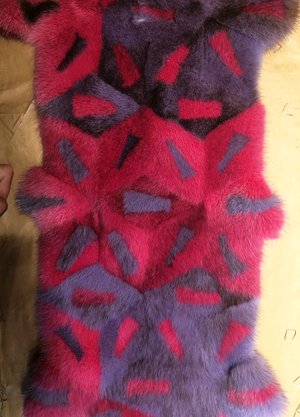Creating a technical product is partly a science, partly a craft and, of course, partly an inspiration.
Creating a technical product is partly a science, partly a craft and, of course, partly an inspiration. Today, there are countless technologies that have changed the way we work with fur. However, the traditional way has not changed for many centuries. As a result, the combination of old, proven methods and new ways of fur processing in the hands of talented designers have revolutionized the fur industry.
The basic methods of work with fur require manual labor and years of experience to create a skilful product of this beautiful natural material. Below we will tell you about some methods of working with fur. Follow us!
1. In one piece. The simplest and most ancient technique of working with fur is experiencing a rebirth in the hands of modern designers. The basis of this method is that the edges of the skins are cut in the shape of a rectangle, then these rectangular patterns are selected in the shade and direction of the pile, and are sewn together like a patchwork quilt. The volume and accuracy of planting, relevant in today's fur fashion, with
2. Dissolution. The quintessence of furrier's skill and the most time-consuming technique is indispensable for the implementation of complex models with bizarre curves of the fur silhouette. In the process of dissolution, the skin is cut into thin strips, sewn along the length into a long strip of fur by the method of lowering the wedge. The final length and width of the fur pattern are determined by the size of the skin and the planned length of the pattern. Experienced furrier performs seams with precision jeweler, so that the outer fur side of the product seems to be seamless, without the effect of stitching and stripes. The best examples of tailoring in dissolution open a look a pure Mezdra with uniform, dense thin lines-an elegant pattern on the back of the 'silk' fur fabric. To be continued.....




